Comparing the power consumption of a 30 year old refrigerator to a brand new one

Our apartment came with a refrigerator. It was alright, it made things cold, it kept them cold. It was also incredibly noisy, and no matter how much I fiddled with its settings, the compressor was always running and any ice cream left in the deep freeze part got rock solid.1
When I hooked up one of my smart plugs to it, I soon learned why: one of the two compressors was running all the time. This lead to a huge block of ice forming on the back of the main compartment, and the deep freeze section icing up really quickly. I suspect that the thermostat may have been busted and contributed to the issue, but after trying to repair a dishwasher, getting cut about 10 times on my hands and losing, I had zero interest in attempting another home appliance repair on my own.
The refrigerator was the UPO Jääkarhu (jääkarhu means polar bear in Finnish), and the manual that the previous owner had still kept around had July 1995 on it, meaning that the refrigerator was about the same age as I am: 30 years old. Not bad at all for a home appliance!
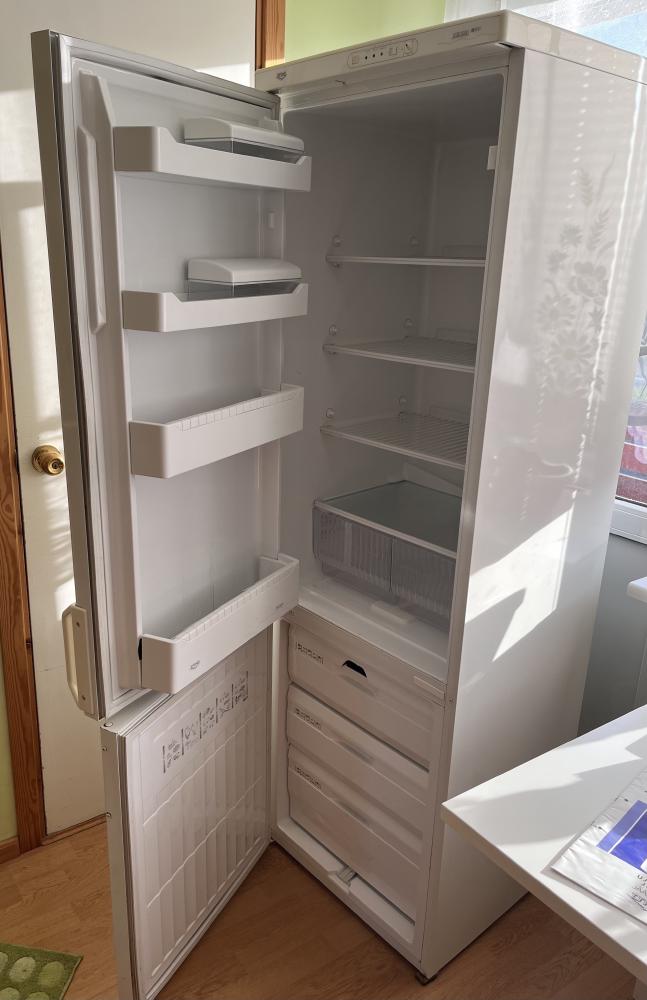
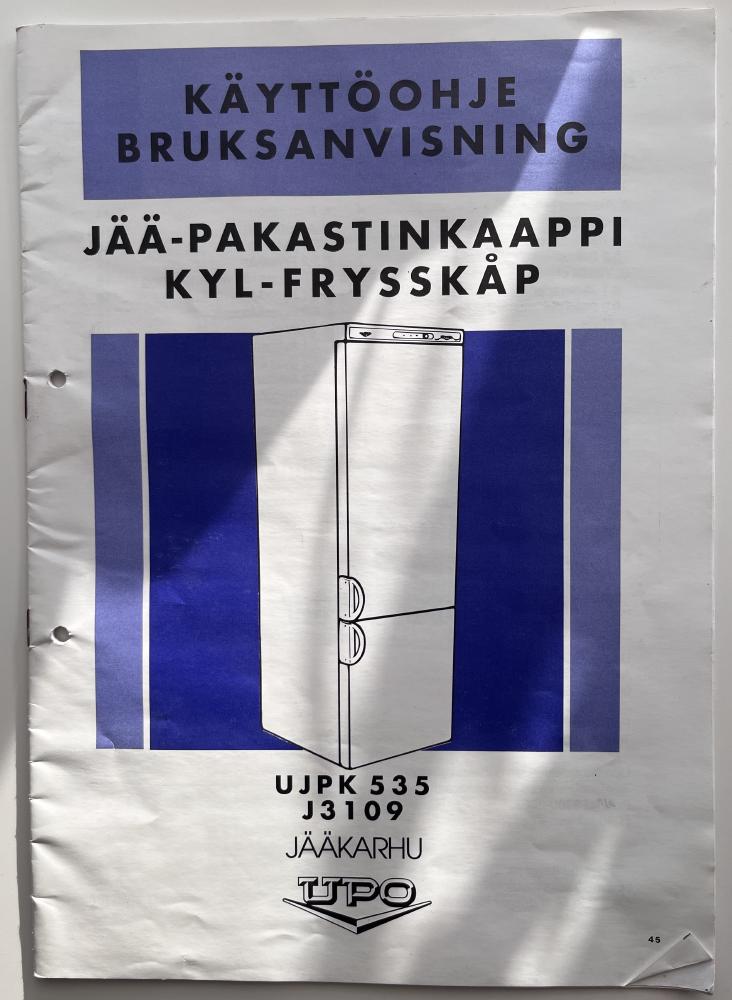
I shopped around for a new refrigerator and got a decent one that’s about the same size, except newer. I won’t mention the brand here because they didn’t pay me anything and this post really isn’t a refrigerator review, but it was in the low-to-midrange class, sporting a “no frost” feature, and could be bought for about 369 EUR in Estonia in the summer of 2025. Based on some napkin math, I assumed that within a few years, the electricity savings will cover the upfront cost of buying the new refrigerator, assuming that it doesn’t break down.
After letting it run for a while, I had some data!
Turns out that the old one consumed 3.7x more electricity compared to the new one.
Here are some typical daily power consumption numbers:
- old refrigerator: 2.6 kWh
- new refrigerator: 0.7 kWh
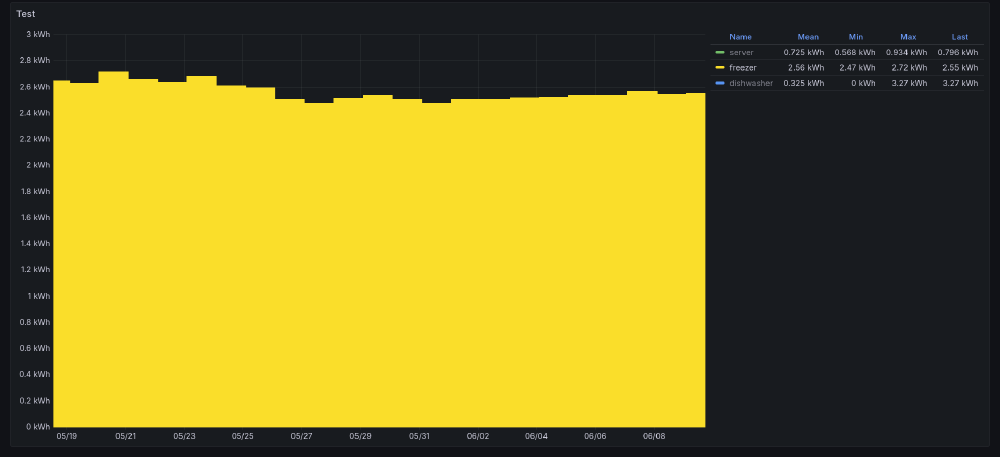
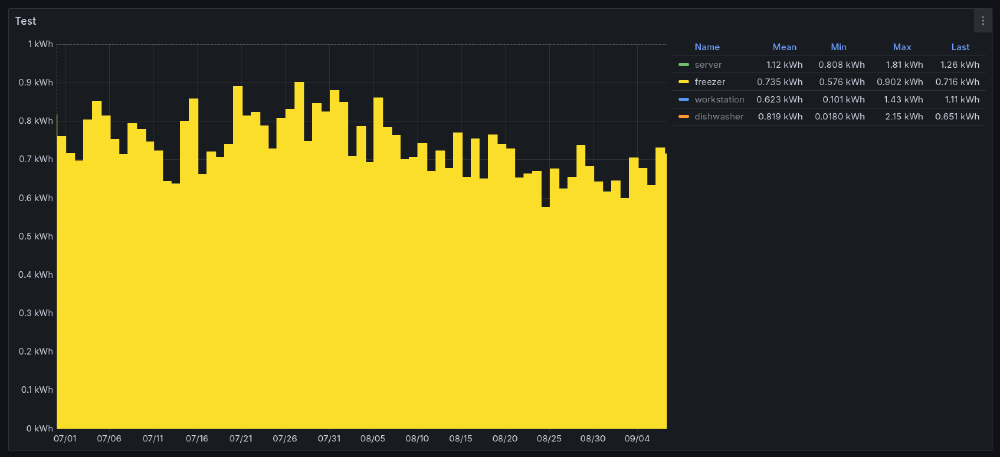
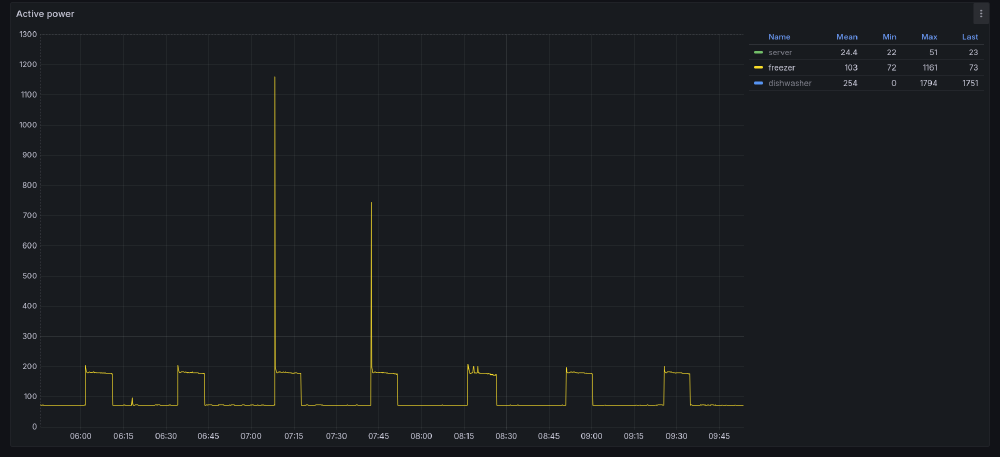
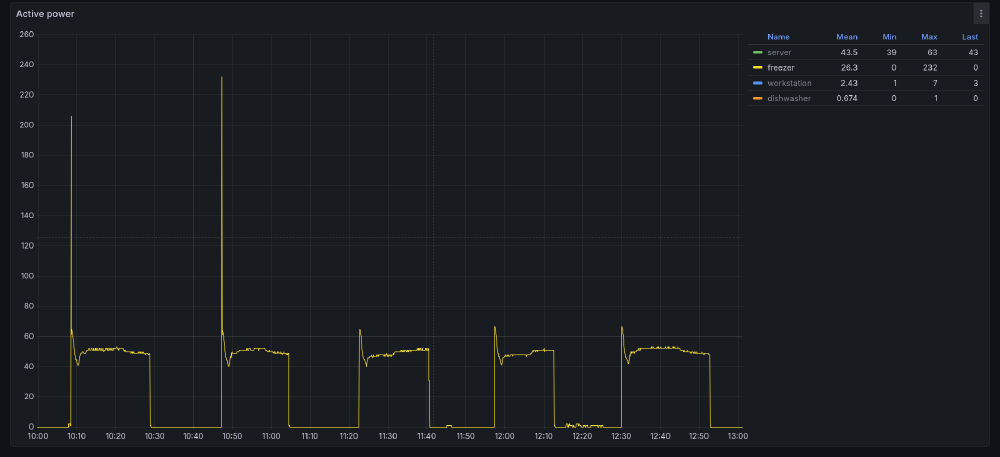
The difference is more noticeable if we zoom out a bit.
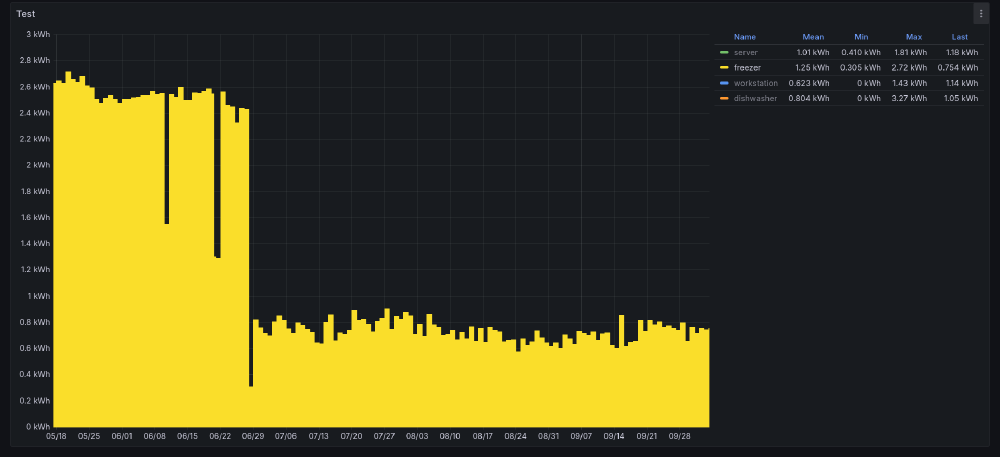
Moving from ~78 kWh to ~21 kWh consumed each month is nice. Around the time we replaced the refrigerator, we also got a working dishwasher, and with those two combined I saw a solid 10-20% decrease in the overall power usage of the whole apartment. We went from using 334 kWh in June to 268 kWh in July, 298 kWh in August and 279 kWh in September.
Remember that napkin math I made earlier? If we assume about 57 kWh savings per month, and an average electricity price of 17 cents per kWh (based on actual rates during August 2025), it will take about 38 months or a bit over 3 years for the new refrigerator to pay off in the most pessimistic scenario. The pay-off will likely be larger if we account for energy prices usually rising during winter.
Don’t worry about the old refrigerator, we gave it away to a person who needed one for their new home in the short term as a stopgap until they get further with renovation work. Even got some good chocolate for that!
The only point of concern with this change is that I don’t really trust the new refrigerator to last as long as the old one. The previous one was good for 30 years if you look past the whole ice buildup, heat and noise, but with the new one I suspect that it’s not going to last as long.
At least my new refrigerator doesn’t have a Wi-Fi-connected screen on it!
-
honestly, I miss that a lot, the ice cream was colder for longer, I ate it in smaller bites and savored it more. ↩︎
Subscribe to new posts via the RSS feed.
Not sure what RSS is, or how to get started? Check this guide!
You can reach me via e-mail or LinkedIn.
If you liked this post, consider sharing it!